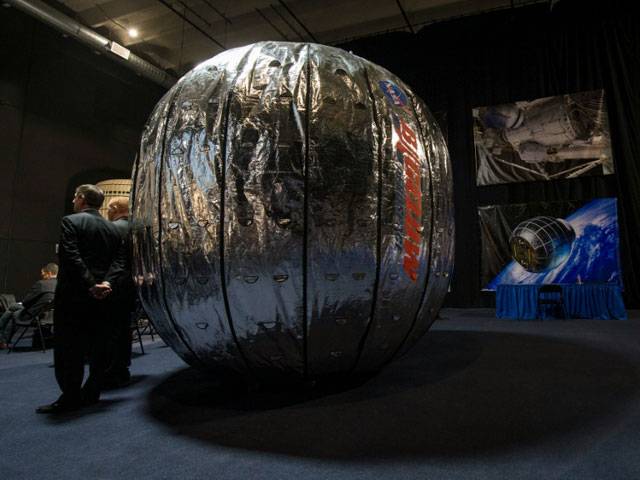MIAMI - A temporary habitat at the International Space Station failed to inflate Thursday and work was halted after the US space agency ran into problems expanding the module to full size. The new room, known as the Bigelow Expandable Activity Module (BEAM), is part of an experiment to test expandable habitats that astronauts might use on the Moon or Mars in the coming decades.
NASA astronaut Jeff Williams took charge of the inflation early Thursday, in cooperation with mission control in Houston. However, the module made little progress despite several hours of effort. “Flight controllers informed NASA astronaut Jeff Williams that BEAM had only expanded a few inches in both length and diameter at the time the operation ceased for the day,” the US space agency said in a statement.
The module, when fully expanded, should reach a size of 13 feet long (four meters) by 10.5 feet (3.23 meters) wide.
NASA canceled a press conference that had been scheduled for 1400 GMT to discuss the effort, but said another attempt could come as early as Friday morning.
“NASA and Bigelow Aerospace are working closely to understand why the module did not fully expand today as planned,” a NASA spokeswoman said. “Engineers are meeting at the Johnson Space Center in Houston to discuss a path forward.” She added that the press conference “has been postponed until we have more information available to share.”
The oblong habitat, developed by Bigelow Aerospace under an $18 million contract with NASA, is being tested for the first time in space.
Astronauts were scheduled to enter it for the first time on June 2, according to the initial timeline.
The plan was for the crew onboard the space station to venture into the module several times a year to collect data from interior sensors - particularly to see how well it protects people against radiation in space. Experts have said the inflation process may be better described as “unfolding,” since it takes very little air to bring the pod to full size.
The space station crew was to expand BEAM by introducing a small amount of air from the orbiting lab via a small manual valve on the BEAM bulkhead.
Only about 0.4 pounds per square inch (psi) was supposed to be needed to expand BEAM to its full shape. Eight air tanks inside of BEAM, once activated, were meant to bring the pod to full pressure, requiring about 42 pounds of air to fully pressurize BEAM’s internal volume of 565 cubic feet (16 cubic meters).
The benefit of expandable habitats lies in how little space they take up in the cargo hold of a spacecraft, yet allow for greater living and working space once inflated.
But key questions that remain to be answered include how well the pod would protect people against solar radiation, space debris and the temperature extremes of space.






